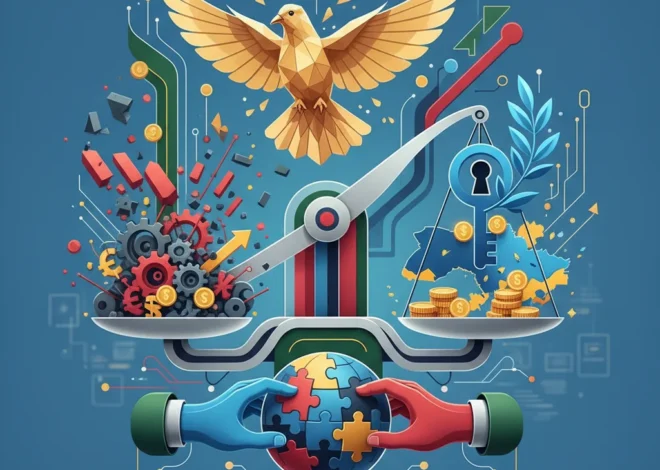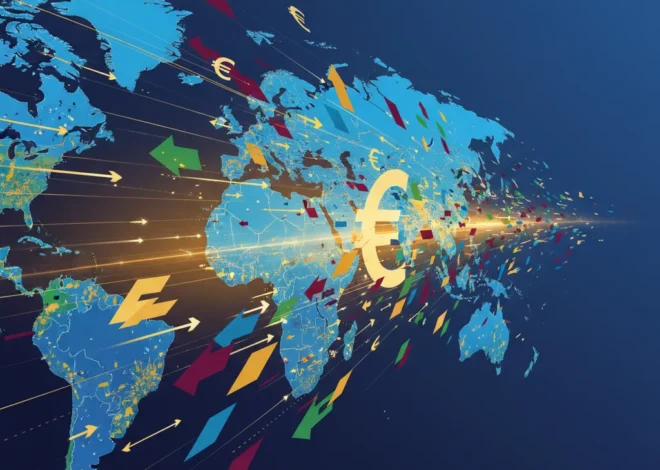
Navigating the Tariff Tightrope: A CEO’s Dilemma and What It Teaches Every Investor
The Phone Call That Could Make or Break a Company
Imagine you’re the CEO of a successful, family-run business. For over 60 years, your company has built a reputation for quality, exporting high-end leather shoes to discerning markets in the US and Europe. Your biggest client, a major US retailer, accounts for a substantial portion of your revenue. Then, one day, the phone rings. It’s your US buyer, and they have a demand that puts you between a rock and a hard place: cut your prices by 10%, or risk losing their business entirely.
This isn’t a simple negotiation. The demand is a preemptive strike against a threat that doesn’t even exist yet: a potential 25% tariff on Indian goods that the US President has been discussing. Your client wants you, the manufacturer, to absorb the risk of future geopolitical turmoil. This is the exact quandary faced by “Farida,” the protagonist of a Harvard-style teaching case study from the Financial Times. Farida’s dilemma is more than just a classroom exercise; it’s a microcosm of the intense pressures facing business leaders and investors in today’s interconnected and often volatile global economy.
How do you navigate a crisis fueled by political uncertainty? Where does the risk lie, and who should bear it? This case study offers critical lessons in strategy, negotiation, and financial resilience that extend far beyond shoemaking, providing a vital lens for anyone involved in international finance, investing, or business leadership.
The Geopolitical Chessboard: When Politics Dictates Price
To understand Farida’s predicament, we must first understand the landscape. The situation is set during the Trump administration, an era defined by a seismic shift in US trade policy. The prevailing winds of free trade were replaced by the stormy gusts of protectionism, most famously exemplified by the trade war with China. Tariffs, essentially taxes on imported goods, became a primary weapon in this economic conflict.
While the focus was on China, the ripple effects were global. The mere threat of tariffs on goods from other nations, like India, was enough to send shockwaves through supply chains. For a US retailer, a sudden 25% tariff would be catastrophic for margins. They could either absorb the cost, pass it on to consumers (risking a drop in sales), or push the liability back up the supply chain—to manufacturers like Farida. This is a classic example of how political rhetoric can directly impact the stock market, as investors frantically re-price the risk profiles of companies with international exposure.
This dynamic forces a fundamental re-evaluation of supply chain risk. For decades, the primary drivers were cost and efficiency. Today, geopolitical resilience is just as critical. A company’s success in international trading is no longer just about the quality of its products but its ability to anticipate and buffer against political shocks.
Calm or Chaos: Decoding the Binary Mindset of Modern Finance
Deconstructing the Dilemma: A High-Stakes Decision Tree
Farida is faced with three core options, each with its own set of significant risks and potential rewards. The decision will not only determine the fate of a key client relationship but also set a precedent for all future negotiations. Let’s break down the strategic calculus.
Here is a comparison of the strategic choices available to the Indian shoemaker:
| Strategic Option | Potential Upside | Significant Downside |
|---|---|---|
| 1. Accept the 10% Price Cut | – Secures the relationship with the largest client. – Provides immediate business continuity and stable cash flow. |
– Immediately erodes profit margins. – Sets a dangerous precedent for this and other clients. – Absorbs 100% of the risk for a tariff that may never materialize. |
| 2. Reject the Demand Outright | – Protects current profit margins. – Signals strength and confidence in the company’s value. – Avoids setting a negative precedent. |
– High risk of losing the largest client immediately. – Potential for significant revenue loss and operational disruption. – May damage industry reputation if the client is lost. |
| 3. Negotiate a Compromise | – Demonstrates partnership and flexibility. – Potential to share the risk and find a mutually agreeable solution. – Could strengthen the long-term relationship. |
– Negotiation could fail, leading back to Option 2. – May still result in some margin erosion. – Requires sophisticated negotiation skills and a willing partner. |
Expert Analysis: The Path Forward for Farida
So, what should Farida do? The classroom answer and the real-world answer converge on one strategy: negotiation. Rejecting the demand outright is too risky, and accepting it is financially unsustainable and strategically weak. The goal is to transform the client’s ultimatum into a collaborative problem-solving session.
1. Reframe the Conversation
Farida should approach the US buyer not as an adversary, but as a long-term partner facing a shared external threat. The conversation should shift from “Who will pay?” to “How can we solve this together?” This involves presenting a clear analysis of their own costs, demonstrating that a 10% cut is untenable without sacrificing the quality the buyer depends on. Transparency is key.
2. Propose a Risk-Sharing Agreement
A creative, tiered solution is the most logical path. Farida could propose a model where the risk is shared:
- Scenario A (No Tariff): Prices remain the same. Business as usual.
- Scenario B (Tariff Imposed): A pre-agreed cost-sharing mechanism kicks in. For example, Farida could absorb 5% of the tariff’s impact, the retailer absorbs 10%, and the remaining 10% is passed on to consumers through a price increase. The exact numbers are subject to negotiation, but the principle is about shared pain. This demonstrates a commitment to partnership while protecting a portion of the margin.
This approach turns a binary choice into a spectrum of solutions, a hallmark of advanced economics and strategic finance.
The Trillion-Dollar Pivot: Why Bill Gates’ Climate Shift Is a Wake-Up Call for Investors
3. Future-Proofing the Business
This crisis is also a powerful catalyst for long-term strategic change. Regardless of the outcome with this specific client, Farida must act to reduce future vulnerability. This is a form of internal investing in the company’s own resilience. Key actions include:
- Market Diversification: Aggressively pursue new clients in other markets (e.g., Europe, Middle East, Asia) to reduce dependency on the US.
- Product Diversification: Explore opportunities to move up the value chain, creating products with higher margins that can better absorb cost shocks.
– Operational Efficiency: Invest in technology and process improvements to lower the cost base, creating more financial flexibility.
Lessons for Every Investor and Business Leader
Farida’s story is not an isolated incident. It is a powerful allegory for the challenges of our time. Whether you’re an investor analyzing a company’s stock or a leader setting corporate strategy, there are universal takeaways:
1. Geopolitical Risk is Financial Risk: For too long, political analysis was seen as separate from financial analysis. This is no longer the case. Understanding the geopolitical landscape is fundamental to assessing the risk of any company with international operations. A sudden policy shift in one country can decimate the earnings of a company halfway across the world.
2. Supply Chain Concentration is a Liability: Over-reliance on a single customer, supplier, or country is a massive vulnerability. The companies best positioned to thrive are those with diversified, resilient, and agile supply chains. Investors should scrutinize customer concentration figures in financial reports.
3. Partnership Trumps Transactional Relationships: In a stable world, transactional relationships based purely on price can work. In a volatile world, deep partnerships built on trust and mutual benefit are more durable. Companies that treat their suppliers as partners in problem-solving are more likely to navigate crises successfully.
The Digital Euro: A Solution in Search of a Problem?
Ultimately, Farida’s tariff quandary is a masterclass in modern business strategy. It teaches us that the most important assets in today’s global economy are not just efficient factories or low costs, but agility, strategic foresight, and the ability to build resilient relationships. For investors and leaders alike, the lesson is clear: prepare for uncertainty, because the only certainty is that it will continue.


